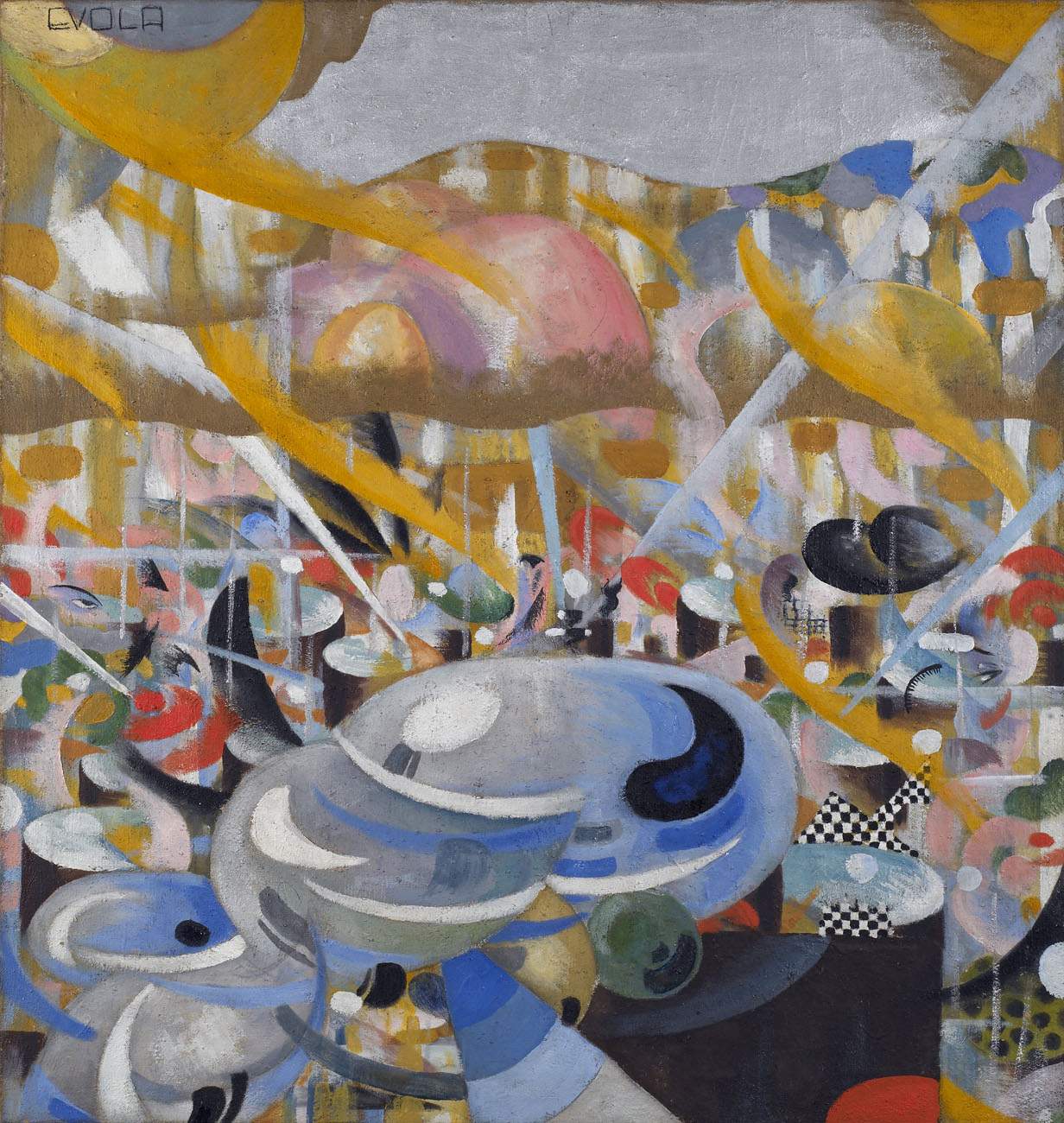The Mart in Rovereto is dedicating, from May 15 to Sept. 18, 2022, an exhibition to artist and philosopher Julius Evola (Rome, 1898 - 1974), who actively participated in theItalian Avant-Garde. A painter, he experienced a brief artistic season between 1915 and 1921, which he abandoned to devote himself to the study of philosophy, esotericism and oriental, hermetic and alchemical doctrines. After an early Futurist period in which he produced dynamic and lively compositions, the artist distanced himself from the movement to get closer to Tristan Tzara and the poetics of Dadaism. The artist sought an inner dimension in line with European abstract trends and the thought expressed by Vasily Kandinsky in his famous essay, The Spiritual in Art (1912).
Born in 1898 in Rome, Evola made his debut as an artist by attending Giacomo Balla ’s studio and interpreting Futurist language in dynamic and lively compositions. An intellectual intolerant of the “modern, democratic, materialistic world” and moved by an “impulse to transcendence,” Evola later distanced himself from Futurism to get closer to Tristan Tzara, thus adhering to the poetics of Dadaism. The artist sought an inner dimension in line with European abstract trends and the thought expressed by Vasily Kandinsky in his famous essay, The Spiritual in Art (1912). Even his adherence to the Dada movement, however, was short-lived, and the painter announced his “artistic suicide” in 1922. He devoted himself to the humanities and esoteric disciplines, proclaiming controversial and reactionary political positions; he frequented circles close to Fascism-though he contested its hierarchies and never joined it-and, in the years following the war, of conservatism and the Italian and European extreme right.In the second half of the twentieth century his art was rediscovered: in 1963 Enrico Crispolti dedicated a retrospective exhibition to him at the La Medusa gallery in Rome and, in parallel, Vanni Scheiwiller published his autobiography entitled Il cammino del cinabro and acquired his archive of Dadaist writings. Renewed interest in his art prompted Evola to begin painting again a few years before his death in 1974.
One hundred years after his dismissal from painting, the Mart in Rovereto gives an account of Julius Evola’s artistic affairs after a long period of oblivion. The exhibition, curated by Beatrice Avanzi and Giorgio Calcara, illustrates his entire artistic career through a selection of works created between 1915 and 1921 and between 1965 and 1970. Amid strong and vivid color contrasts, the Mart’s exhibition is the largest ever organized on Evola. On display are more than 50 works: in a first part, paintings belonging to the Futurist period characterized by abstract elements charged with energy and unexpectedly “psychedelic”; followed by the “interior landscapes,” a pure expression of the spirit with hermetic and esoteric references; and finally, the 1960s with replicas of his historical works and some figurative paintings that deviate from his early production. Although he devoted himself to painting for a very short period of time, Evola traversed the season of the Avant-garde movements, interpreting their themes and instances with originality. Common denominator of his practice: the spiritual quest.
For all information, you can visit the Mart’s official website.
Pictured: Julius Evola, Five o’clock tea (1917-1918), oil on canvas, 96x91 cm. Brescia Musei Foundation
 |
| Julius Evola stars in the largest exhibition dedicated to him, at the Mart in Rovereto |
Warning: the translation into English of the original Italian article was created using automatic tools. We undertake to review all articles, but we do not guarantee the total absence of inaccuracies in the translation due to the program. You can find the original by clicking on the ITA button. If you find any mistake,please contact us.